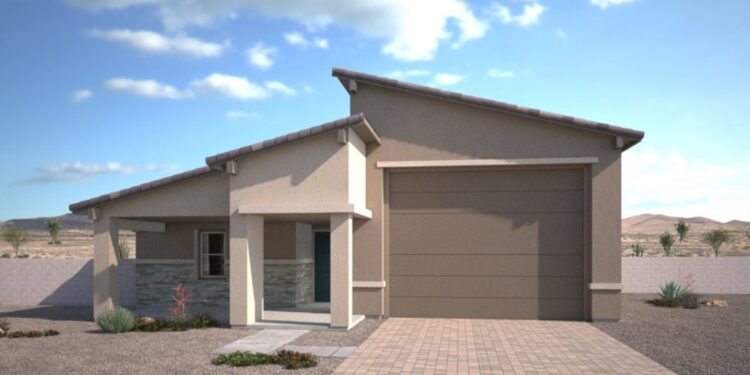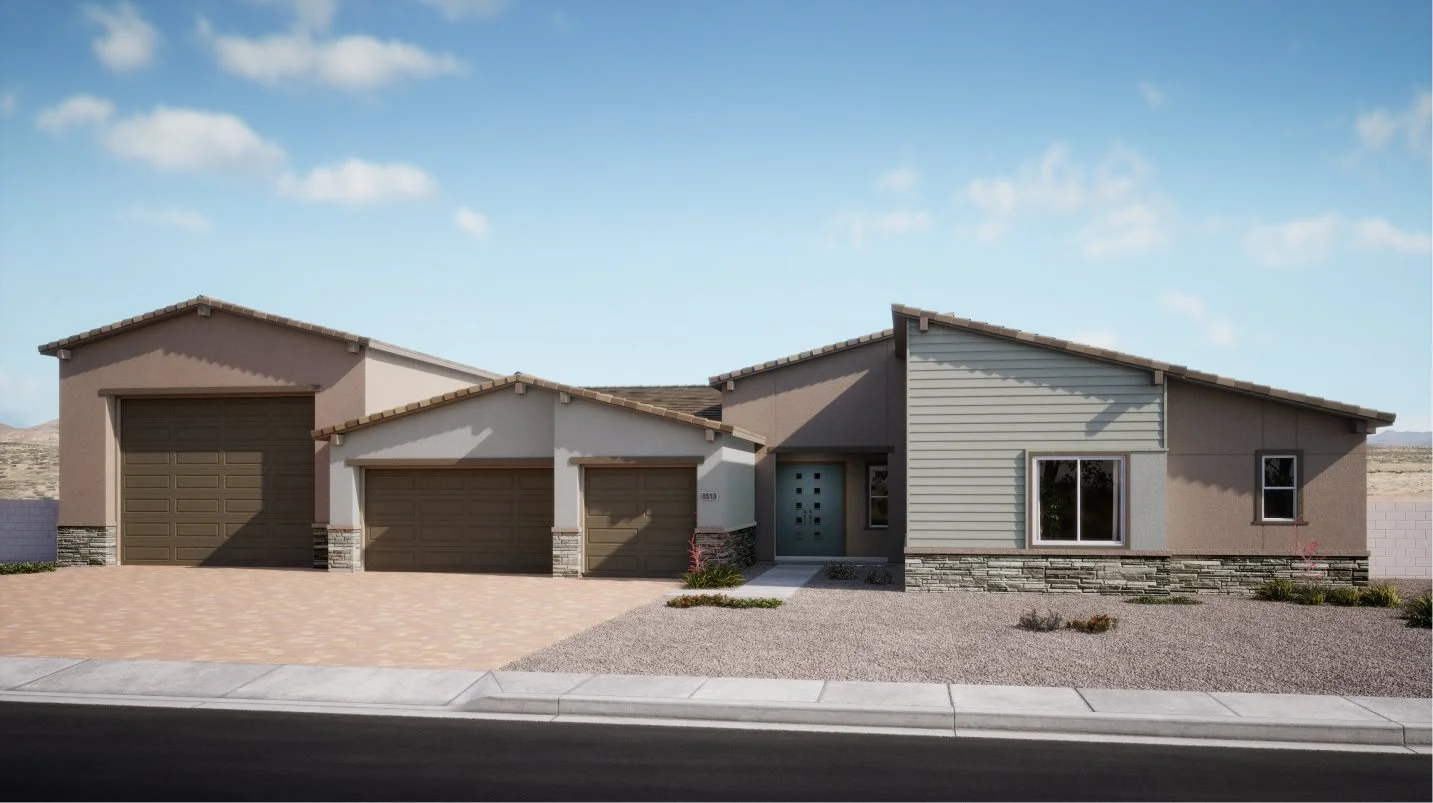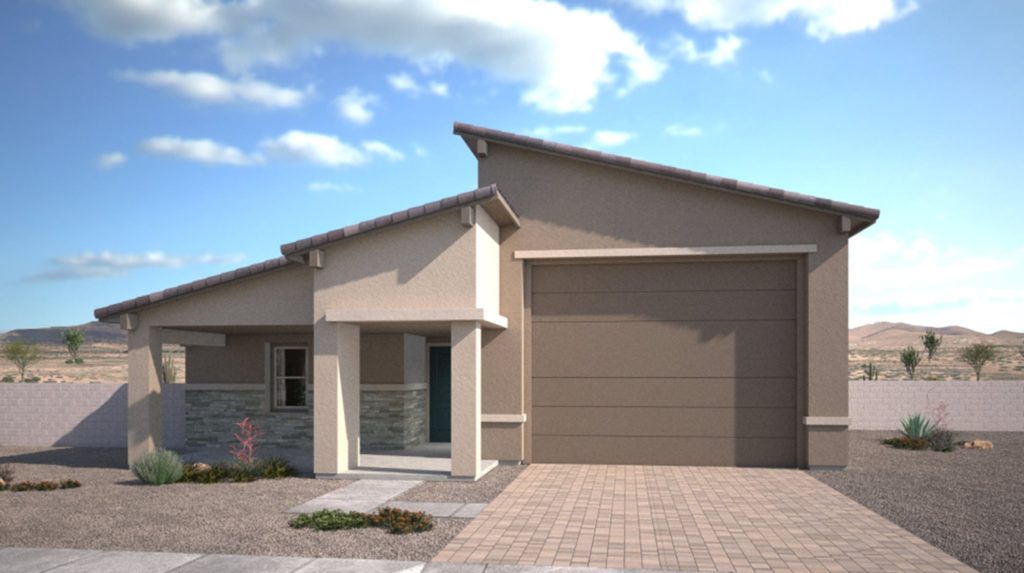RV Garage Dimensions

RV owners need to understand proper garage dimensions to protect their valuable recreational vehicles. A Class A Motorhome stands as the largest and most luxurious RV, reaching 10 feet in height and stretching between 21 to 45 feet in length. These measurements create substantial space needs for storage planning.
RV garages measure between 12 and 16 feet in width, with lengths from 30 to 50 feet and minimum ceiling heights of 14 feet. The size requirements change based on your vehicle’s type. Standard RV garages occupy about 700 square feet, typically measuring 14 feet by 50 feet. Your property’s value could jump by 13% with a new garage addition. The project’s cost ranges from $36,000 to $140,000, and most homeowners invest around $90,000. This piece helps you find the perfect fit for your vehicle while boosting your property’s value.

Table of Contents
- 1 Understanding RV Types and Their Dimensions
- 2 Standard RV Garage Dimensions Explained
- 3 How to Measure Your RV for a Perfect Fit
- 4 Customizing Your RV Garage for More Than Just Parking
- 5 Cost Considerations and Material Choices
- 6 Summing all up
- 7 Here are some FAQs about RV garage dimensions:
- 7.1 What size is a standard RV garage?
- 7.2 What RV will fit in a standard garage?
- 7.3 What are the dimensions of RV storage?
- 7.4 What are the dimensions of a standard RV?
- 7.5 What is the standard size of a garage?
- 7.6 How tall does a garage need to be for a camper?
- 7.7 How wide should a garage door be for an RV?
- 7.8 How wide are most RV sites?
- 7.9 What size is a trailer garage?
Understanding RV Types and Their Dimensions
RV classes need specific garage dimensions that match their sizes and setups. The right storage solution starts with knowing what you plan to store.
Class A Motorhomes: Size and garage needs
Class A motorhomes are the largest and most luxurious RVs you can buy. These huge vehicles stretch from 29 to 45 feet long, and some models hit the maximum 45-foot mark to give ultimate comfort. Their impressive height of 10-14 feet needs careful planning for garage space.
A Class A motorhome’s garage should have:
- Height clearance: Minimum 14 feet tall to fit roof accessories
- Length: 45-50 feet to move around easily
- Width: 12-16 feet to handle mirrors and slide-outs
Most people choose a 16′ x 50′ garage for a single Class A motorhome. This size works great without wasting space. Bigger sizes like 24′ x 48′ or 60′ x 60′ work well for multiple motorhomes.
Class B Camper Vans: Compact but tall
Class B motorhomes might be “compact,” but they still need plenty of headroom. These camper vans stretch between 16 and 23 feet. They stand about 8 feet tall but need at least 12 feet of garage clearance.
These vans are easier to drive and use less fuel than bigger RVs. Their sleek design makes them perfect for people who want mobility with all the basics. Storage needs include:
- Height clearance: Minimum 12 feet
- Length: 25-30 feet
- Width: At least 10 feet
Class C Motorhomes: Mid-size with overhead clearance
Class C motorhomes come with a special bunk above the cab that makes them taller. These mid-size RVs run from 20 to 35 feet long and stand about 10 feet tall. They need garage heights like Class A vehicles.
Your Class C motorhome needs:
- Height clearance: Minimum 14 feet
- Length: 40-45 feet
- Width: At least 12 feet
Families love Class C vehicles because they balance space and drivability. Ford® makes most chassis, while some come from Chevrolet® or Freightliner®.
Towable RVs: Travel trailers and fifth wheels
Towable RVs come in many shapes and sizes.
Travel trailers hook to your bumper and range from 13 to 40 feet long. They stand between 8 and 13.5 feet tall. Your storage should have:
- Height clearance: 14-16 feet
- Length: 30-40 feet
- Width: 12-14 feet
Fifth wheels connect to a special hitch in your truck bed and stretch from 20 to 49 feet. They measure 11.5 to 13.5 feet tall, maxing out at 13’6″ because of federal highway rules. Your garage should offer:
- Height clearance: 16-18 feet
- Length: 40-50 feet
- Width: 14-16 feet
Fifth wheels end up shorter than travel trailers of the same size because they hook up inside the truck bed instead of behind it. Their design also lets you turn tighter, which helps in small spaces.

Standard RV Garage Dimensions Explained
Building the perfect RV garage starts with getting the right measurements to keep your recreational vehicle safe. RV storage structures need specific dimensions for proper clearance, easy access, and functionality, unlike regular car garages.
Typical width, length, and height ranges
RV garage dimensions usually range from 12 to 30 feet wide, 20 to 60 feet long, and 12 to 16 feet high. A structure measuring 18ft wide x 40ft deep x 14ft tall serves as the standard size, with prices starting at $13,000.
Vehicle types determine these measurements:
- Class C motorhomes without accessories need: minimum 14 feet height, 40 feet length, and about 12 feet width
- Travel trailers (without tow vehicles): 30-40 feet long, 12-14 feet wide, and 14-16 feet high
- Fifth wheels (with hitches and extensions): 40-50 feet long, 14-16 feet wide, and at least 16-18 feet high
RV owners often build larger than their original plans because storage needs grow over time. Yes, it is common for experienced RV owners to suggest “build twice as large as you think you will ever need”.
Standard RV garage door dimensions
Door sizing is crucial when planning your RV garage. Add at least two feet to your RV’s height for the garage door track and motor. Federal rules limit RV heights to 13.5 feet, but many vehicles reach this limit, especially with rooftop accessories.
Different vehicle classes need different door heights:
- Class A motorhomes: 14-16 feet
- Class B camper vans: 12 feet
- Class C motorhomes: 14 feet
- Fifth wheels: 14 feet
- Travel trailers: 12 feet
- Pop-up trailers: 10 feet
Class A motorhomes need door openings at least 10 feet wide, though 12 feet makes access easier. Smaller Class B, B+, and C vehicles can work with 8-9 foot door widths. Overhead doors are popular for convenience, but you can also choose sliding, side-hinge, tilt-up, over-roof retractable, swing-out, and bi-fold doors.
Clearance space for maneuvering and accessories
You need enough space to move your RV around. A 30-foot RV with a 50-foot curb-to-curb turning diameter needs plenty of entrance space—often wider than the garage door—to make a 45-degree turn.
Leave room to walk around the vehicle inside for maintenance. RV owners recommend an interior parking space at least 10 feet longer than your longest expected vehicle. You should also factor in slide-outs (usually 3-3.5 feet) plus a buffer zone (3-4 feet) to determine the ideal width.
A practical setup would be a 16-foot ceiling height, 14-foot door height, and 16-foot interior width with a 12-foot door opening. Some owners like 22-foot wide garages that give 4 feet of clearance on each side.
The best RV garage dimensions match your vehicle’s needs while allowing room for future changes, protecting your valuable motorhome for years.
How to Measure Your RV for a Perfect Fit
Accurate measurements are the foundations of a successful RV garage project. Your garage plans need precise dimensions of your recreational vehicle to avoid getting pricey modifications later. This piece shows you specific techniques to measure every critical part of your RV.
Measuring height including roof accessories
Your RV’s true height is a big deal as it means that manufacturer specifications once you add accessories. Here’s how to get an accurate measurement:
Start by placing your RV on level ground and measure from the ground to the highest point on the roofline. This first measurement gives you a starting point, but you still need to account for rooftop elements.
Next, measure all roof-mounted accessories one by one – including air conditioning units, antennas, satellite dishes, solar panels, and vents. These items usually add 8-12 inches to your overall height.
Safety experts suggest adding at least 2-3 feet beyond your total height measurement to figure out your RV garage height needs. This buffer zone helps with stress-free parking and future upgrades. Many experienced RV owners write this vital information on a dashboard note they can check quickly.
Calculating total length with attachments
Length measurements need you to look at both the main vehicle and its extensions:
The basic length comes from measuring front bumper to rear bumper. Towable RVs need measurements from the front end of the bumper to the rear end, including accessories.
Fifth wheel owners should take two measurements – one with the tow vehicle attached and one without. This helps you plan for different parking scenarios, as some campgrounds want tow vehicles to stay attached.
RV experts say you should add at least 2 extra feet beyond your measured length when planning standard RV garage dimensions. This space helps you maneuver easily without damaging your vehicle or garage structure.
Determining width with slide-outs and mirrors
Width needs more than just the basic frame measurements:
Measure the widest point of your RV, including slide-outs, awnings, and mirrors. Most recreational vehicles are between 8 and 8.5 feet wide, which matches highway rules.
RV garage door dimensions need an extra 3 feet on each side for easy door access. This clearance keeps doors safe from damage and makes getting in and out simple.
RVs with slide-outs need measurements in both retracted and extended positions. Slide-outs usually add about 3-3.5 feet to your total width, which really changes the size of RV garage you’ll need.
Good measurements lead straight to garage specifications that protect your investment and give you working space for maintenance. By doing this, you’ll build the perfect size RV garage that fits your specific vehicle without extra expense.
Customizing Your RV Garage for More Than Just Parking
A well-laid-out RV garage delivers way beyond the reach and influence of just vehicle storage. This substantial space can revolutionize into a multifunctional area that maximizes your investment and addresses practical needs beyond shelter.
Adding storage space for gear and tools
Smart storage solutions can turn unused RV garage space into organized systems that house camping equipment and maintenance supplies. Clear storage bins are affordable options you can stack to maximize vertical space while keeping contents visible. Overhead racks can employ ceiling areas to store bulky, less-used items and keep the floor available.
To name just one example, see these strategic storage options:
- Wall-mounted shelving with adjustable heights to store tools and smaller items
- Cabinets and lockers that provide enclosed, dust-protected storage
- Underbelly containers that store smaller accessories when space runs tight
RV owners often add customized cabinetry that fits their standard rv garage dimensions. They sometimes convert open shelving that used to need netting into secure enclosed storage. This works especially well in larger motorhome garage spaces where careful dimensional planning fits both the vehicle and plenty of storage zones.
Incorporating workbenches or hobby areas
The height that RV garages typically provide for tall vehicles creates perfect opportunities to install dedicated workspaces. A strategically placed workbench serves as a functional area where you can handle repairs, maintenance, and DIY projects. You can maximize its utility by adding essential tools, proper lighting, and nearby storage for items like screws and adhesives that you use often.
The best way to set up involves positioning workbenches against walls within your rv garage dimensions while leaving enough room to access your vehicle. Many owners install pegboards or tool hangers above their workbenches to keep tools organized and easy to reach. This setup makes the most of the cost to build rv garage projects by making every square foot serve multiple purposes.
Ventilation, insulation, and climate control options
Good environmental management protects your vehicle and everything else you’ve added to your metal rv garage. The right ventilation prevents musty odors and humidity from building up that could damage stored items. You can choose anything from simple window and door openings to installed fans that help air move better.
Foam insulation gives excellent thermal resistance and helps keep temperatures stable throughout the year. It blocks heat during summer and keeps warmth inside during winter, so you get a comfortable environment whatever the season. So foam insulation improves energy efficiency by reducing heating and cooling needs, which leads to lower utility costs.
Cost Considerations and Material Choices
RV garage construction needs smart financial planning and the right measurements. A good budget plan will give you the perfect structure without any surprise costs.
Cost to build RV garage by size
Your financial investment for an RV garage ranges from $9,000 to $180,000, and most homeowners pay around $90,000. You’ll need $40 to $140 per square foot based on your design choices and materials.
The size of your garage plays a big role in the total cost:
| Square Feet | Average Cost Range |
|---|---|
| 700 | <citation index=”2″ link=”https://www.homeadvisor.com/cost/garages/build-rv-garage/” similar_text=”Square Feet |
| 800 | <citation index=”2″ link=”https://www.homeadvisor.com/cost/garages/build-rv-garage/” similar_text=”Square Feet |
| 850 | <citation index=”2″ link=”https://www.homeadvisor.com/cost/garages/build-rv-garage/” similar_text=”Square Feet |
| 900 | <citation index=”2″ link=”https://www.homeadvisor.com/cost/garages/build-rv-garage/” similar_text=”Square Feet |
Bigger garages cost more but give you extra space to work or store things. A standard RV garage measures about 20 feet wide, 50 feet long, and 14 feet high.
Metal RV garage vs wood or brick
Metal structures are becoming the top choice, and with good reason too. Steel buildings cost 40% less than traditional wood-frame options. Long-term ownership of metal buildings runs $35-$50 per square foot while wood construction costs $70-$90 per square foot.
Metal garages beat wood in several ways:
- Lower insurance premiums (15-30% reduction)
- Reduced maintenance costs ($0.10-$0.25 vs $0.50-$1.00 per square foot annually)
- Superior longevity (40-60 years vs 15-30 years for roofing)
Brick options might cost more but look more attractive. Vinyl siding remains the cheapest choice at $3-$12 per square foot.
Attached vs detached garage costs
You can save 10-15% on total project costs by connecting your RV garage to your home. These savings come from using your home’s existing foundation and frame.
Let’s look at the cost difference:
- Detached 24×24 (576 sq ft): $23,040-$40,320
- Attached 24×24 (576 sq ft): $20,160-$35,280
Detached structures give you more room to customize and expand later.
Permit and utility installation expenses
Local permits cost between $1,200 to $1,500. You must get these permits – skipping them could mean heavy fines or even taking down the structure.
Your utility costs will include:
- Electricity for detached structures: $1,000-$2,500
- Water and sewer hookups: costs vary by distance
- HVAC installation: $475-$2,100 for attached garages, about $4,000 for detached ones
Foundation work adds another key cost, with concrete foundations running $5,000 to $15,000 based on specs.
Summing all up
A properly sized RV garage protects your valuable asset and can boost your property value by up to 13%. We got into how different RV classes just need specific dimensions in this piece. Class A motorhomes need 14-foot heights while Class B camper vans are more compact but still substantial.
You must measure carefully before finalizing garage plans. Smart RV owners always factor in rooftop accessories, slide-outs, and proper clearance space for ideal dimensions. Experience shows that building bigger than originally predicted saves trouble later. Many owners follow the rule “build twice as large as you think you will ever need.”
Your well-designed RV garage can do more than store vehicles. Storage solutions, workbenches, and proper climate control make this space a valuable addition to your property. These features tap into the full potential of your investment and solve practical needs beyond vehicle protection.
Budget plays a crucial role in planning, and most homeowners spend around $90,000 on RV garage projects. Metal structures are budget-friendly options that cost 40% less than traditional wood-framed builds. They also last longer and need less maintenance.
Take time to measure your vehicle precisely and think over future needs before starting construction. The right RV garage combines protective functionality with smart design choices that boost both your property value and RV experience for years ahead.
Here are some FAQs about RV garage dimensions:
What size is a standard RV garage?
Standard RV garage dimensions typically range from 40 to 50 feet long, 14 feet wide, and 12 to 14 feet tall to accommodate most recreational vehicles. These dimensions of RV garage are designed to fit Class A motorhomes and larger trailers with some extra space. Many homeowners opt for metal RV garage structures that can be customized to these standard RV garage dimensions.
What RV will fit in a standard garage?
Smaller Class B and Class C motorhomes under 24 feet might fit in an oversized standard garage, but most RVs require specialized RV garage dimensions. Pop-up campers and some teardrop trailers are among the few RVs that could potentially fit in standard RV garage door dimensions meant for passenger vehicles. For proper storage, an RV carport or full RV garage with appropriate dimensions is recommended.
What are the dimensions of RV storage?
Commercial RV storage facilities typically offer spaces with dimensions of RV garage ranging from 12×35 feet up to 14×50 feet for larger vehicles. These standard RV garage dimensions provide enough room for most motorhomes and fifth wheels with some clearance. Outdoor RV carport storage spaces often follow similar sizing guidelines to protected RV garages.
What are the dimensions of a standard RV?
Standard RV sizes vary greatly, with smaller travel trailers starting around 20 feet long and large Class A motorhomes reaching 45 feet in length. These varying sizes directly influence the necessary RV garage dimensions for proper storage. Most standard RV garage door dimensions need to accommodate widths between 8.5 to 10 feet and heights up to 13 feet for taller RVs.
What is the standard size of a garage?
While residential garages typically measure 20×20 feet, standard RV garage dimensions are significantly larger at approximately 14×40 feet minimum. The difference between standard garage and RV garage dimensions reflects the substantial size difference between passenger vehicles and recreational vehicles. Metal RV garage structures are often built to these larger specifications.
How tall does a garage need to be for a camper?
For most campers and RVs, garage height in the dimensions of RV garage should be at least 12 feet, with 14 feet being ideal for taller Class A motorhomes. Standard RV garage door dimensions for height typically range from 12 to 14 feet to clear RV air conditioners and satellite dishes. An RV carport may require similar clearance heights for proper vehicle storage.
How wide should a garage door be for an RV?
Standard RV garage door dimensions for width should be at least 12 feet, with 14 feet being preferable for easier maneuvering. These RV garage dimensions account for the typical 8.5-foot width of most RVs plus necessary clearance on each side. The dimensions of RV garage openings often exceed residential garage door sizes significantly.
How wide are most RV sites?
Most RV park sites have widths between 20 to 30 feet, which is considerably wider than standard RV garage dimensions. These generous widths in the dimensions of RV garage sites allow for slide-outs and outdoor living space. While an RV carport or garage focuses on vehicle storage, RV sites are designed for comfortable temporary living.
What size is a trailer garage?
Trailer garage dimensions typically range from 12×30 feet for smaller units up to 14×50 feet for large fifth wheels, similar to standard RV garage dimensions. These dimensions of RV garage spaces for trailers account for both the vehicle length and necessary maneuvering room. Metal RV garage structures are popular choices for trailer storage due to their customizable sizes.






